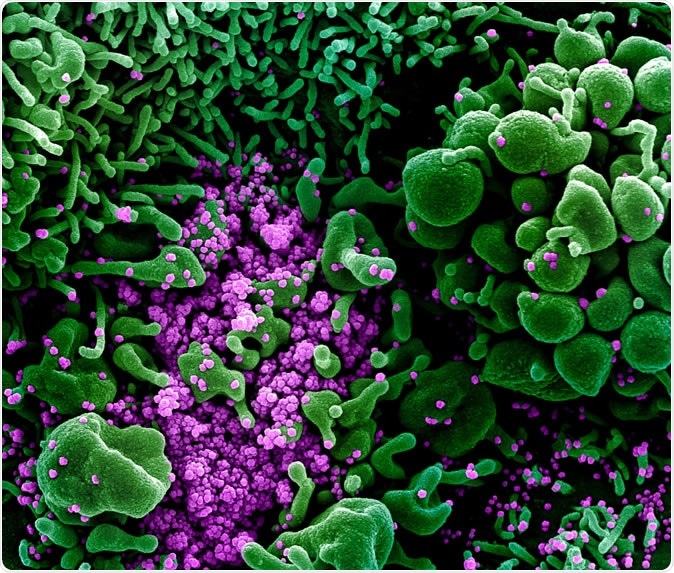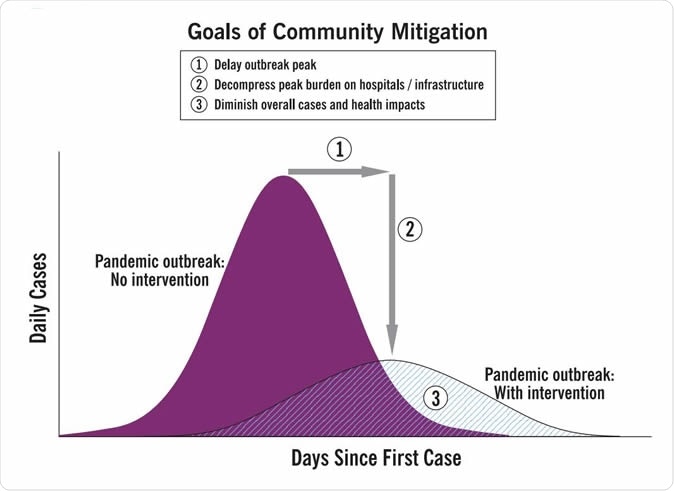Amid the coronavirus global pandemic, it is still unclear which government measures are useful in curbing the spread of the virus. Some countries had imposed lockdowns and community quarantines, while others took time to restrict population movement before they closed schools and nonessential businesses. Others are still allowing regular routines despite an increasing number of infections.
Now, new research by scientists at Imperial College London has modeled the spread and impact of COVID-19. The data is informing the current U.K. government policy on the pandemic.
Public health measures reduce deaths
Published in the 9th report from the WHO Collaborating Centre for Infectious Disease Modelling within the J-IDEA, Imperial College London, and the MRC Centre for Global Infectious Disease Analysis, the study has found that strategies that aim to reduce the epidemic may reduce the deaths by half, and decrease the peak healthcare demand by about two-thirds.
Though promising, these measures will still not be enough to prevent health systems from being overwhelmed due to the influx of patients and the high demand for resources.
The World Health Organization (WHO) has urged manufacturers to increase the supply of personal protective equipment to help those on the front line and health workers to protect themselves. The number of doctors and nurses is decreasing, with many contracting the disease.
The team suggests that more rigorous and intensive, socially disruptive interventions are needed to suppress transmission to low levels, which include large scale social distancing for months before a vaccine or treatment is available for use.

Novel Coronavirus SARS-CoV-2 Colorized scanning electron micrograph of an apoptotic cell (green) heavily infected with SARS-COV-2 virus particles (purple), isolated from a patient sample. Image captured and color-enhanced at the NIAID Integrated Research Facility (IRF) in Fort Detrick, Maryland. Credit: NIAID
What measures are needed?
Some countries have imposed health measures to reduce the transmission of the virus. Macau, for one, had reported that their actions to halt the outbreak are effective since they have no new cases, and most patients have now recovered.
China, which imposed the lockdown of Wuhan in Hubei Province, has reported that new infection rates have slowed down, allowing more people to return to their daily routines.
In the current absence of vaccines and effective medicines for COVID-19, there are public health measures that countries can apply to slow the spread of COVID-19. These include home isolation of cases, wherein those manifesting symptoms of the disease should remain at home for seven days after the onset of symptoms. Home quarantine measures for all those in close contact with people who have symptoms for 14 days. Social distancing to reduce overall contacts that people have outside their homes, closure of schools and universities, and social distancing for older adults and those with an underlying medical condition.
These measures can be implemented alone or in combination. Many countries have already adopted these measures, especially those that are desperate to stem the spread of the virus, including Italy, which has reported the most cases outside China, with 31,506 cases and 2,503 deaths.
Meanwhile, the U.K. and the U.S. have yet to impose strict measures to limit population movement and reduce the spread of the deadly virus.
“We show that in the U.K. and U.S. context, suppression will minimally require a combination of social distancing of the entire population, home isolation of cases, and household quarantine of their family members. This may need to be supplemented by school and university closures. However, it should be recognized that such closures may have negative impacts on health systems due to increased absenteeism,” the researchers said.
Two scenarios
The team modeled available data, and they revealed that depending on the magnitude of the interventions, two possible scenarios.
Firstly, interventions or public health measures can help slow the circulation of the infection, but it will not entirely stop its spread. Slowing the infection rates can, however, help reduce the strain and demand on healthcare systems, while protecting vulnerable populations. Outbreaks with this measure are projected to peak over a three to four-month period.
Slowing the spread can be done through a combination of home quarantine measures, isolation of cases, and social distancing for at-risk people. These measures can help reduce the peak healthcare demand by as much as two-thirds and reduce the death toll by half. However, the resulting epidemic may still lead to about 250,000 deaths, even overwhelming the healthcare system, particularly intensive care units.
The second scenario shows that strict and more intensive interventions can interrupt transmission and reduce the number of infections, but once these interventions become lax, the cases will again rise. Though there are low case numbers in this scenario, a later epidemic might arise in the winter months, unless the interventions can be sustained.
In this scenario, which aims to suppress the outbreak, the team revealed that this might need a combination of social distancing of the whole population, home isolation of cases, and household quarantine for family members, and in some cases, shutting down of schools. These measures, however, may tend to become relaxed as the situation becomes better. As a result, cases may again rise, and the government may need to reimpose these measures.
For further information, the team believes the data they will acquire from China and South Korea may shed light on which strategy is better in halting the coronavirus outbreak.
“The current situation with the COVID-19 pandemic is evolving rapidly; governments and societies, therefore, need to be flexible in responding to the challenges it poses,” Professor Azra Ghani, Chair in Infectious Disease Epidemiology from the MRC Centre for Global Infectious Disease Analysis, said.
“Our results indicate that widescale social distancing measures that are likely to have a major impact on our day-to-day lives are now necessary to reduce the further spread and prevent our health system from becoming overwhelmed. Close monitoring will be required in the coming weeks and months to ensure that we minimize the health impact of this disease,” Ghani added.
For these measures to be effective, they would need to last between 12 and 18 months. If these measures are not sustained, new cases might arise again.

Image Credit: CDC
U.K. and U.S. public health measures
The study has advised the government of the U.K. on its response strategy in an attempt to reduce the spread of the coronavirus, which has so far affected more than 150 countries and infected nearly 200,000 people worldwide. The death toll has so now reached almost 8,000 people.
Europe has become the new epicenter of the COVID-19 outbreak, with Italy, German, Spain, and France reporting the most cases. The U.K. has nearly 2,000 cases and 71 deaths related to COVID-19, and to slow down its spread, the government has now encouraged vulnerable people to stay at home and isolate themselves for 12 weeks. The government has also introduced a multitude of quarantine and social distancing recommendations.
The United States government also released a 15-day plan to slow the emergence of new infections in the country. The government has imposed restrictions on gatherings of more than ten people or more, and older adults and those with health conditions should self-isolate to protect themselves from the virus.
Global COVID-19 situation
More than 150 countries have now reported cases of the disease. Italy has the highest number of infections outside China, with 31,506 cases in just one month since its first confirmed case. In the country, which has now been locked down, there were 2,503 deaths.
On a more positive note, South Korea’s cases are now slowing down, as it was before a hotspot country for the COVID-19 pandemic. There are 8,413 cases and 84 deaths.
Europe, however, is now experiencing the rapid spread of the virus. The geography and travel accessibility in the continent have contributed to the vast proliferation of the virus. Spain has 11,826 confirmed cases and 533 deaths, while France has reported 7,695 confirmed cases and 148 deaths.
Iran also has a high number of cases, with 16,169 infections and 988 deaths. The United States, meanwhile, experienced a sharp increase of confirmed cases, now topping 6,362 cases and at least 100 deaths. Washington, D.C. remains the epicenter of the outbreak in the country, followed by New York and California.
Sources:
- Ferguson, N., Laydon, D., Nedjati-Gilani, G., Imai, N., Ainslie, K., Baguelin, M., and Bhatia, S. et al. (2020). Report 9: Impact of non-pharmaceutical interventions (NPIs) to reduce COVID-19 mortality and healthcare demand. MRC Centre for Global Infectious Disease Analysis. https://www.imperial.ac.uk/mrc-global-infectious-disease-analysis/news--wuhan-coronavirus/
- Centers for Disease Control and Prevention (CDC). (2020). Cases in U.S. https://www.cdc.gov/
- Coronavirus COVID-19 Global Cases by the Center for Systems Science and Engineering (CSSE) at Johns Hopkins University (JHU)- https://gisanddata.maps.arcgis.com/apps/opsdashboard/index.html#/bda7594740fd40299423467b48e9ecf6